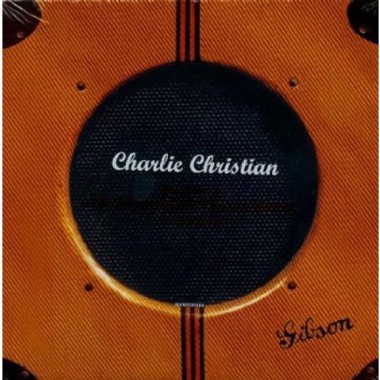In the world of American jazz guitar, one name comes up again and again: Charlie Christian.
In his day, the guitar went from rhythm to lead instrument, and, not coincidentally, from electric to acoustic. Much of the transition had purely to do with volume—no combination of woods, f-holes or stage placement could give an acoustic guitarist the same presence as as trumpeter or a saxophonist. But when guitar pickups finally amplified the instrument, Christian was the most prominent trailblazer. Others, most notably Count Basie guitarist Freddie Green, pioneered a harmonically varied but sparsely played rhythm style, but Christian stepped into waters only a few had tested when he took solos in front of a big band, often copping lines from horn players, then returning them with his own string-laden spin.
His story is meteoric and, like that of many another musician, tragic. The liner notes of a new box set that incudes nearly all his professionally recorded work flesh out the details of an extraordinary—and extraordinarily short—life.
Christian came from a small town in Texas, and grew up playing guitar with his brother and father in Oklahoma City, where the family moved when he was a child. His guitar abilities eventually brought him to the attention of talent scout John Hammond, who in turn recommended him to Benny Goodman. Goodman held a rushed audition during which no amplification was available for Christian.
Hammond apparently undertook an audacious move in the wake of that lackluster audition, sneaking Christian on stage during a Goodman concert. Goodman reportedly tried to call a tune Christian was unlikely to know; his choice of “Rose Room,” which Christian actually knew well, proved to be a stroke of luck for both musicians. Christian soloed to such dazzling effect that he ended up not only in Goodman’s big band, but also in his sextet.
Though his tenure with Goodman was brief thanks to the arrival of Christian’s tuberculosis, many recordings of the two exist. An exhaustive number of them make up Charlie Christian: Genius of the Electric Guitar.
*
If you’re a fan of the most accessible brand of jazz, the popular swing of the ’30s and ’40s, you’d be hard-pressed to find a better collection of sounds. Goodman’s mellow clarinet leads the way, and the golden vibes of Lionel Hampton provide a sonic counterpoint. When Christian solos, his sound is a revelation as much for its ease as for its virtuosity. His solos fit beautifully with Goodman’s aesthetic; he navigates through melodies with an al dente guitar tone, warm and rich. He could move quickly, but didn’t default to the crutch of mere speed.
Many box sets wear thin; the surplus of material becomes but another unplayed disc at the bottom of a pile on a dusty shelf. Not so here. Even repeated takes of the same tunes flow easily.
At odds with all that mellifluousness is another aspect of Christian’s playing. He’s often credited with pushing jazz into the much faster and more complicated bebop style, along with a handful of other musicians (including Thelonious Monk) who joined him at open jams at an after-hours club in Harlem called Minton’s. Christian and the other pros allegedly weeded out amateurs by increasing tempos and difficulty until they couldn’t continue.
To participate successfully in that kind of setting would be a remarkable thing for a musician of any age; consider that Christian was in his early 20s, and you get the impression that he was one of those musicians you meet now and then who somehow have an innate, near-infinite capacity for musical complexity and technical ability.
It’s easy to wonder where such a giant talent might have gone musically in later years, but Christian’s tuberculosis finally got the better of him in 1943, when he died at just 25 years old. It’s no stretch to say that his shadow stretches into the present. Most every guitarist who takes a solo turn in a jazz band can trace his musical ancestry to Christian’s pioneering strings.•



